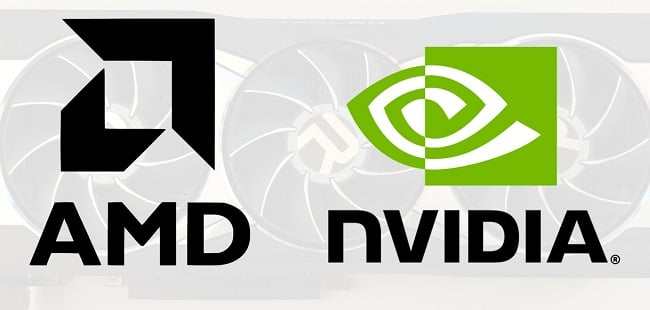The tech world is abuzz with anticipation as AMD and Nvidia prepare to unleash their next generation of graphics processing units (GPUs). These new GPUs promise to deliver unprecedented levels of performance, features, and innovation, setting the stage for a thrilling era of gaming, content creation, and artificial intelligence.
AMD's Radeon RX 9000 series, based on the RDNA 4 architecture, is poised to shake up the market with its focus on enhanced gaming experiences. The RX 9070 XT and RX 9070, expected to be available from March 6, 2025, are designed to deliver enthusiast-class gaming to a wider audience. AMD has focused on improving ray tracing and incorporating AI-powered upscaling technology, with Lisa Su stating that RDNA 4 will bring high-quality 4K gaming to mainstream players. The RX 9070 XT is priced at $599, while the RX 9070 is priced at $549.
The RDNA 4 architecture brings several key improvements. It features up to 64 advanced compute units (CUs), delivering up to 40% higher gaming performance than the previous-generation RDNA 3 architecture. The 3rd generation Raytracing Accelerators offer over 2x the Raytracing throughput per compute unit compared to the previous generation. The 2nd Generation AI Accelerators feature advancements in AI compute, with support for FP8/INT4 formats and improved on-chip scheduling, delivering up to 8x higher AI performance when using sparsity. AMD Radiance Display Engine supports the latest DisplayPort 2.1a and HDMI 2.1b connections, enabling ultra-high resolutions and refresh rates up to 8K 144Hz.
Nvidia, not to be outdone, has unveiled its GeForce RTX 50 series GPUs based on the Blackwell architecture. The RTX 5090 and RTX 5080 launched on January 30, 2025, followed by the RTX 5070 Ti and RTX 5070 in February. Jensen Huang, Nvidia's CEO, has stated that the GeForce RTX 5090 is twice as fast as the RTX 4090, thanks to the Blackwell architecture and DLSS 4. The RTX 5090 features 92 billion transistors and is capable of more than 3,352 trillion AI operations per second. DLSS 4 introduces Multi Frame Generation, which uses AI to generate up to three frames per rendered frame, significantly improving frame rates.
The RTX 5080 is priced at $999, the RTX 5070 Ti at $749, and the RTX 5070 at $545. The RTX 50 series GPUs feature DLSS 4, RTX Neural Shaders for texture compression, and RTX Neural Faces for improved character face quality. All models support PCIe Gen 5 and DisplayPort 2.1b, enabling 8K displays at up to 165Hz.
Both AMD and Nvidia are emphasizing the importance of AI in their new GPUs. AMD's RDNA 4 architecture includes enhanced AI accelerators that significantly improve performance in AI and machine learning workloads. Nvidia's Blackwell architecture incorporates fifth-generation Tensor Cores and DLSS 4, leveraging AI to boost frame rates, reduce latency, and enhance image quality.
The launch of these next-generation GPUs from AMD and Nvidia is poised to have a significant impact on the gaming and technology landscape. Gamers can expect higher frame rates, more realistic visuals, and new AI-powered features that enhance the gaming experience. Content creators will benefit from faster rendering times and improved performance in creative applications. The increased focus on AI will also drive innovation in other areas, such as machine learning, data science, and cloud computing.
However, challenges remain. Both AMD and Nvidia have faced supply constraints and high prices, making it difficult for consumers to get their hands on the latest GPUs. It remains to be seen whether these companies can overcome these challenges and deliver their new GPUs to a wider audience at affordable prices.

















